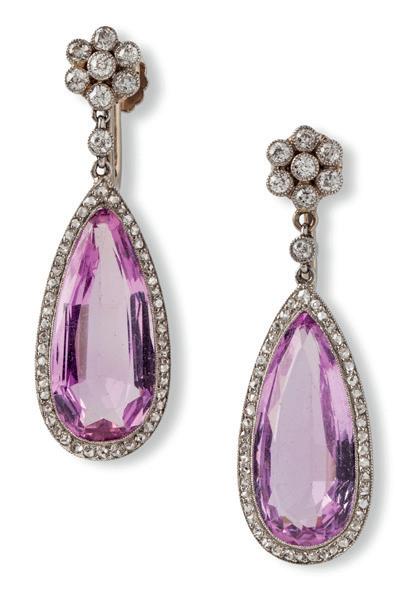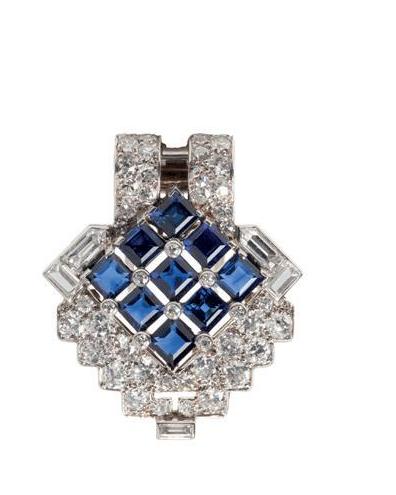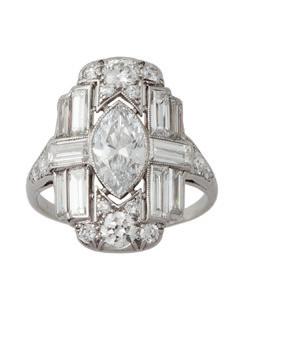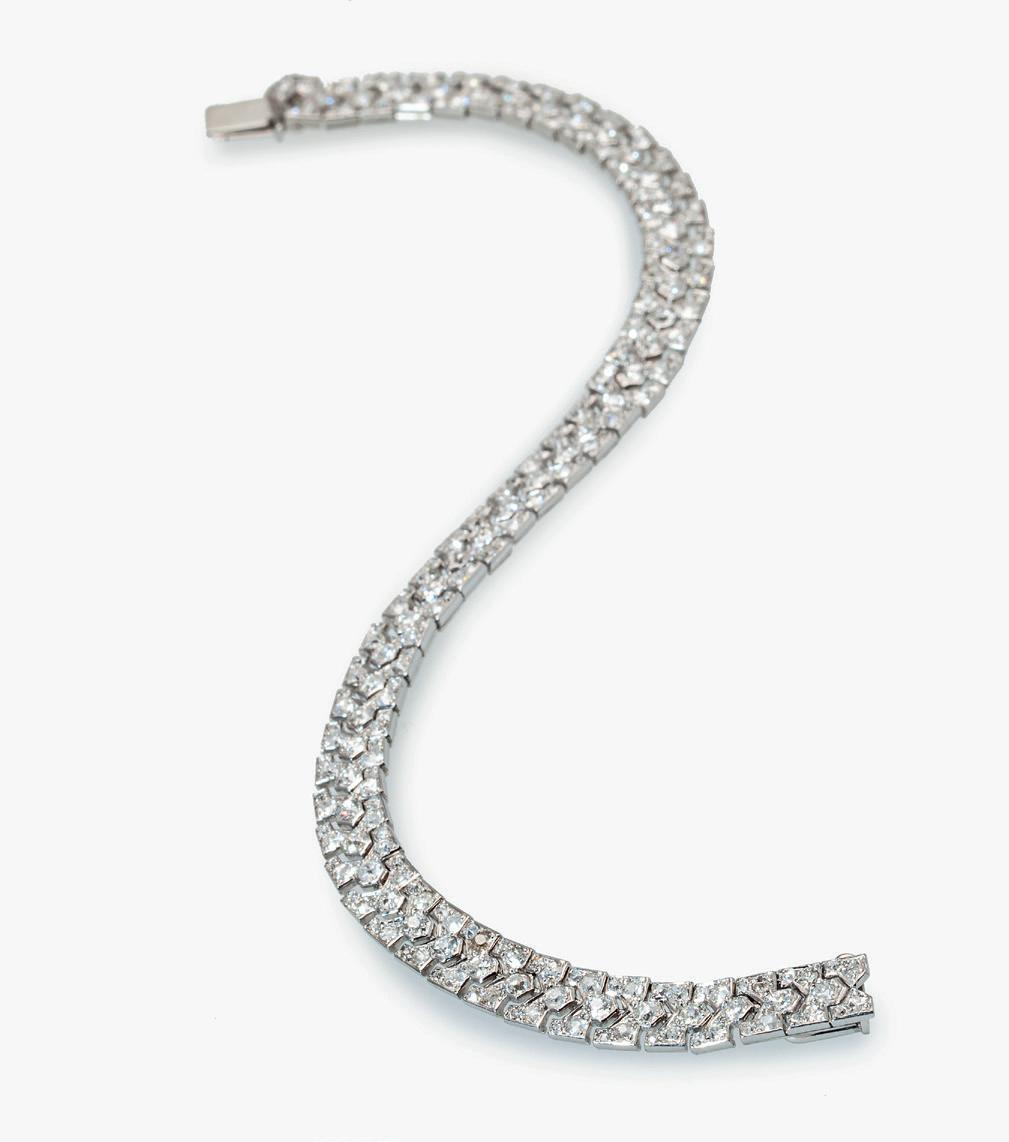
1 minute read
Art Deco
The Art Deco style owes its name to the World Exhibition of 1925 in Paris, the “Exposition Internationale des Arts Décoratifs et Industriels Modernes”. Events like these served as a meeting point for arts, crafts and industry from countries all over the world and enabled a crosspollination of ideas and styles. After the 1925 world exhibition the term Art Deco became the official name of a style which is recognized by clean lines and geometrical patterns as well as bold, contrasting colours. Platinum becomes the most used metal for jewellery in this period. Even though it had been known for much longer, due to its high melting point it had been virtually impossible to form. The term is derived from Spanish and literally means “small silver”. It had the same colour as silver but as it used to be unmanageable it came to be considered less valuable than silver … Platinum is particularly suited for very fine setting: with little metal, gemstones can be set close to each other on a surface. This suited the Art Deco style extremely well: the platinum settings supported the rigid design. Like this, the most beautiful patterns and designs were created with gemstones. Hereby it also became a style with a timeless look, which still suits modern taste today.

A yellow gold desk clock decorated with enamel, diamonds and blue sapphires, signed Cartier, made in Paris in 1920.
Advertisement

A pair of platinum earrings set with pink topaz and diamonds, signed Caldwell & Co., made in Philadelphia, ca 1915.

A platinum dress clip set with blue sapphires and diamonds, signed Cartier, made in Paris, ca 1925.

A platinum ring set with different cut diamonds, made ca 1920.

A platinum diamond-set bracelet, signed Cartier, made in London, ca 1920.
https://www.marjansterk.com/jewellery/period/art-deco-en/








